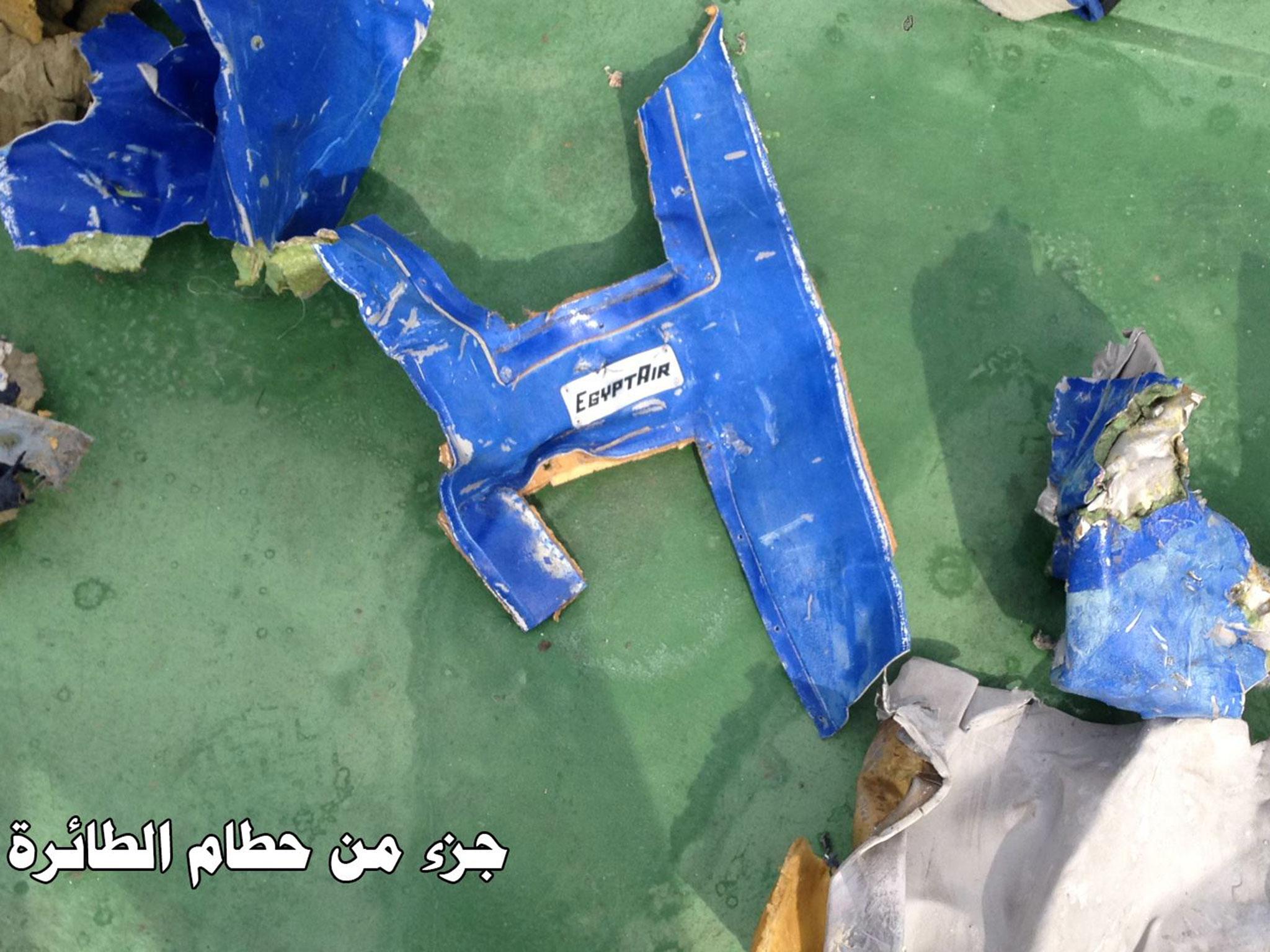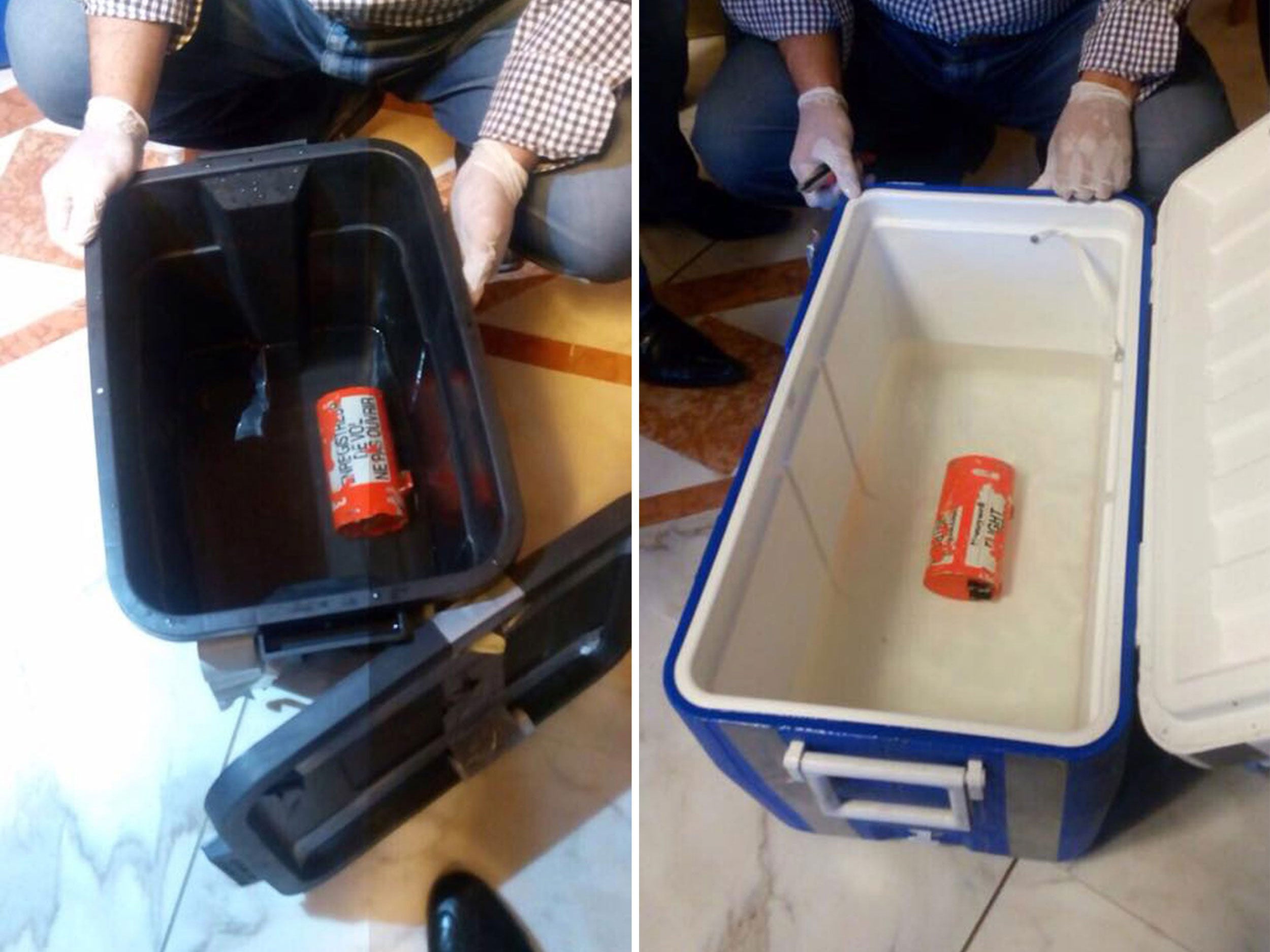EgyptAir crash: Data from plane's black box confirms 'thick black smoke' and heat damage on board flight MS804
The data suggests a fire or other cause for the smoke detected in a toilet and the avionics bay

Your support helps us to tell the story
From reproductive rights to climate change to Big Tech, The Independent is on the ground when the story is developing. Whether it's investigating the financials of Elon Musk's pro-Trump PAC or producing our latest documentary, 'The A Word', which shines a light on the American women fighting for reproductive rights, we know how important it is to parse out the facts from the messaging.
At such a critical moment in US history, we need reporters on the ground. Your donation allows us to keep sending journalists to speak to both sides of the story.
The Independent is trusted by Americans across the entire political spectrum. And unlike many other quality news outlets, we choose not to lock Americans out of our reporting and analysis with paywalls. We believe quality journalism should be available to everyone, paid for by those who can afford it.
Your support makes all the difference.Investigators are a step closer to establishing the cause of the EgyptAir crash after successfully extracting data from one of the plane's black boxes.
Egypt's Aircraft Accident Investigation Committee said the flight data recorder confirmed previous reports of smoke on board flight MS804.
“Preliminary information shows that the entire flight is recorded on the FDR, from when it took off from Charles de Gaulle airport to when the recording stopped at the place of the accident at 37,000ft,” a statement said.
“The recorded data corresponds with Aircraft Communications Addressing and Reporting System (ACARS) messages referring to smoke in the lavatory and electronics room of the avionics bay.”
Recovered wreckage from the jet's front section showed signs of heat damage and “thick black smoke”, the committee added.
As one of two black boxes recovered from the wreckage, the recorder contains detailed technical information on the flight including its altitude and engine information.
Seven minutes before contact was lost with the plane as it flew from Paris to Cairo, a sequence of messages indicated multiple threats on board - possibly including fire in a lavatory and the main electronics bay.
They were transmitted automatically to EgyptAir’s using ACARS.
The first message, sent at 2.26am Cairo time, read: “ANTI ICE R WINDOW”, indicating a problem with the heater for the co-pilot’s window. Six more messages followed in the next three minutes – two over window sensors and two mentioning smoke.
One detector was in a toilet behind the flight deck and the second in the avionics bay beneath the cockpit.
While the smoke detectors are intended to indicate fire, they can also be triggered by condensation of the kind that occurs in the event of sudden decompression.
The final two messages, sent within seconds of each other at 2.29am, read “AUTO FLT FCU 2 FAULT” and “F/CTL SEC 3 FAULT”, indicating problems with the autopilot and the flight control system respectively.
Four minutes later, the aircraft’s transponder made its last broadcast, relaying details of the aircraft and its location before it crashed into the Mediterranean Sea on 19 May, killing all 66 people on board.

The Airbus A320’s damaged cockpit voice recorder was being repaired in France after initial attempts to download information from it and the flight data recorder failed because of damage.
French and American investigators have overseen attempts to extract data from the black boxes as they were produced by US company Honeywell, while the plane was manufactured in France.
Radar data showed the aircraft had made sudden turns after cruising normally in clear skies, plummeting from 38,000ft to 15,000ft and disappearing at around 10,000ft.
The Paris prosecutor opened a manslaughter investigation into the crash on Monday, when a spokesperson said it would begin as an accident inquiry because there was no evidence so far to link it to terrorism.
Egypt’s civil aviation minister initially said he believed terrorism was a more likely explanation than equipment failure but so far no hard evidence has emerged and no group has claimed responsibility.

A forensics official said body parts retrieved were small and pointed to a possible explosion on board, but the head of Egypt’s forensics authority dismissed it as “mere assumptions”.
Phil Giles, a former air safety investigator who worked on the Lockerbie Bombing case, told The Independent that images of wreckage added to mounting indications the plane broke up mid-air.
“All the evidence so far, including the pictures, indicates that the aircraft broke up at altitude rather than when it impacted the sea,” he said.
“Aircraft do infrequently break up as a function of severe weather; however, this wasn't a factor in this accident.
“Modern aircraft such as the A320 don't have a habit of suffering major structural failure unless there is some external factor like a BUK missile as in the case of MH17, or an internal device.“
Among the victims was Richard Osman, a father-of-two from Wales, and a Frenchman who almost missed the fated flight after losing his passport.
EgyptAir said 30 Egyptians, 15 French passengers, two Iraqis, and one passenger from Britain, Sudan, Chad, Portugal, Algeria, Canada, Belgium, Kuwait and Saudi Arabia were on board.
Join our commenting forum
Join thought-provoking conversations, follow other Independent readers and see their replies
Comments